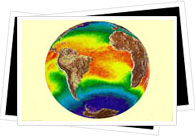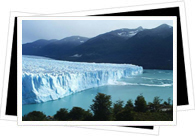In terms of weather, Latin America has everything.
Spanning from Mexico in North America down to the southernmost point of South America which meets Antarctica, incorporating mountains, valleys, tropical islands and deserts, there is no typical weather in Latin America.

Each country has its own unique weather patterns and temperatures which are often relative to altitude.
South of the equator the seasons are reversed, so when it is summer in Europe and North America, it is winter in South America. For example, in Argentina spring time is from September until November. Summer falls between December and March, autumn is then until May and winter is from June until August.
Many countries in Latin America are at high altitudes which too affect weather patterns and temperatures, as does their global location - closer to the equator will almost certainly bring warmer weather than a location hundreds of kilometres away.

The Caribbean is in an area known as the hurricane belt, which is prone to hurricanes when the surface temperature of waters is in excess of 28 degrees Celsius. The months of August, September in particular and October see more hurricane and tropical storm activity than other months in the hurricane season of June until November.
Northern areas of Latin America are subject to hotter temperatures and extreme sunlight. Care must be taken to keep the body hydrated and to protect the skin and eyes from exessive sunlight which can cause long term damage.
In mountainous and southern regions where temperatures are cooler and the weather is often wetter, layers of warm clothing and waterproof footwear are essential items.
The Latin American weather is as varied as it gets with wet rainforest jungles, tropical beaches and waterways, icy national parklands and storms which can, for the unprepared, wreck havoc. With this in mind, ensure that you are prepared for any eventuality so you can truly experience everything that Latin America has, in comfort.